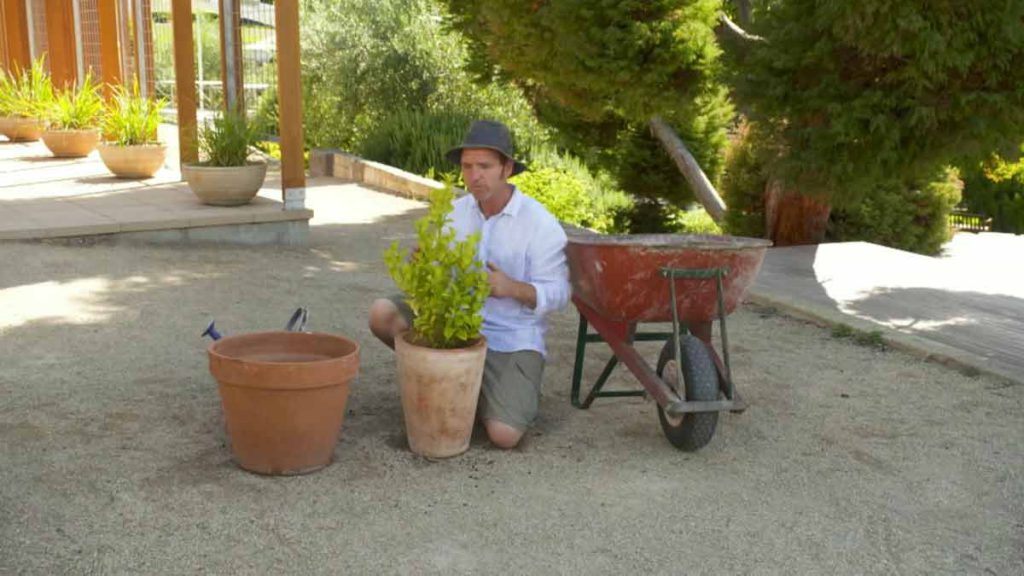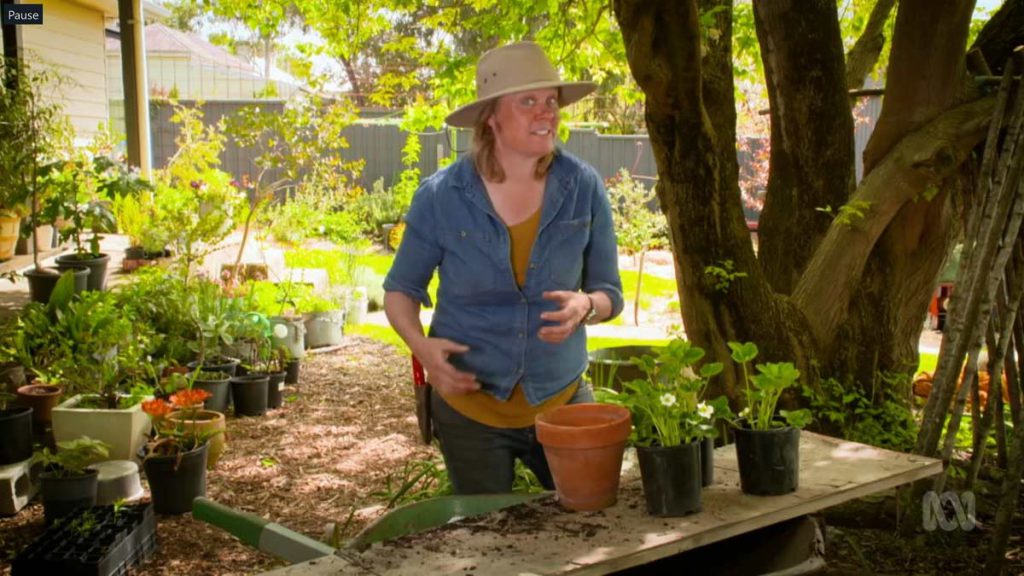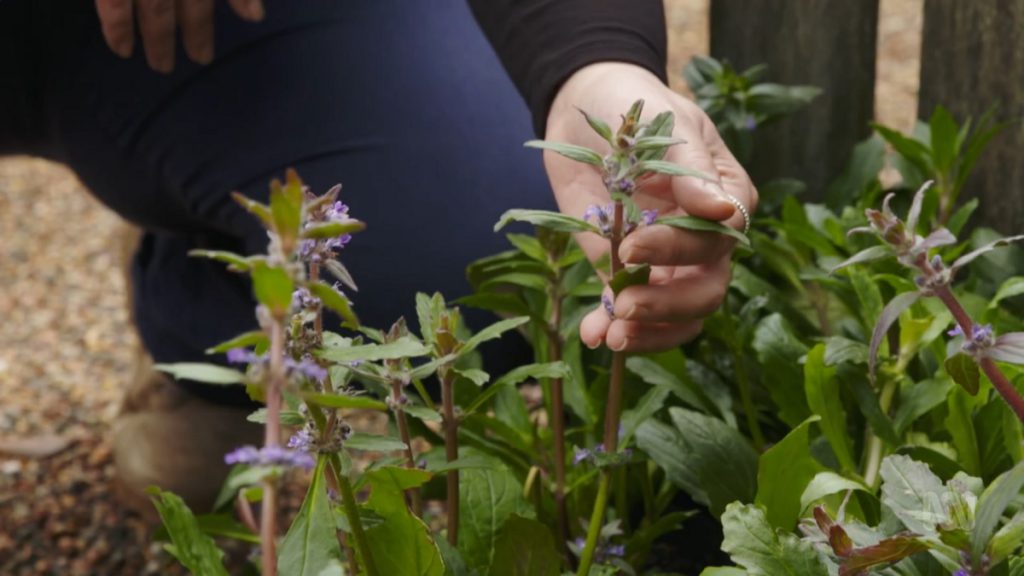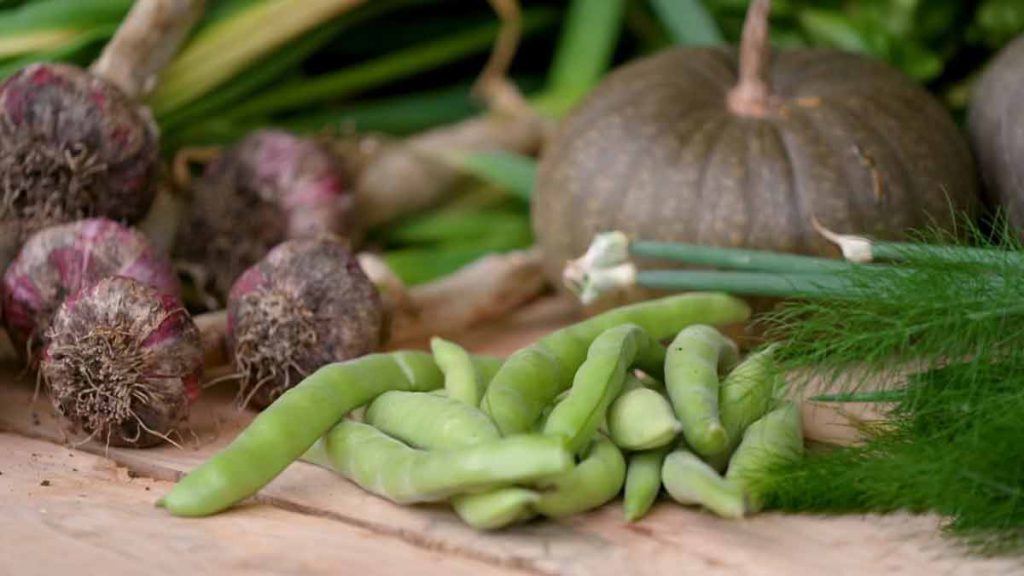Gardening Australia episode 3 2021: Millie Ross visits an indigenous plant propagation expert, Costa Georgiadis creates a polystyrene palace for worms, Jerry Coleby-Williams dives into the war on weeds, and Jane Edmanson visits a fruitful family farm.
Gardening Australia has always provided practical, trustworthy and credible gardening advice to inspire and entertain. Inspiring, entertaining and full of practical advice, join Costa Georgiadis and the team as they unearth gardening ideas, meet avid gardeners and look at some of the most inspiring gardens from across the country.
Gardening Australia episode 3 2021
Fruitful Family Farm
Jane visits a horticulturist who has cultivated a productive farming lifestyle for her family. When Marcelle and Carl decided to embrace sustainable living, they bought the family farm where Marcelle had grown up and set about showing their kids “the good life”: producing and preserving their own fruit, vegetables, eggs and meat.
The area is very windswept and the ornamental borders favour hardy succulents and perennials that can handle the harsh conditions. Most of the flowers are there to feed their bees. Productive fruit trees include avocadoes, apples citrus, stonefruit, a hedge of macadamias, and pistachios. In hindsight she thinks espaliering the trees would have made them easier to net and manage.
The vegie beds are laid out in large squares and Marcelle says if she was doing it again she would make them long and thin, for easier access. Marcelle used to try. The chooks are excellent for their personalities as well as manure, weed control and egg production. There are also alpaca, sheep, cattle, guinea fowl and ducks.
FAQS – Composting diseased plants | Za’atar | Eucalyptus
Gardening Australia presenters answer commonly asked gardening questions.
Polystyrene Palace – DIY Worm Farm
Costa creates the perfect home for the hardest workers in your garden – the worms! Worms are amazing creatures, eating our food scraps and transforming them into some of the best plant fertiliser known to gardeners. That’s why Costa was keen to build a worm farm on his nature strip, converting an old bath for the purpose.
But there are plenty of ways to host some worms in smaller spaces – using wheelie bins, specially made stacking kits – or simply discarded polystyrene boxes from the green grocers. It’s a cheap, easy way to build a worm farm that will fit in the smallest of gardens. Worms need cool, moist, dark spaces so planning a sheltered spot out of direct sun for your worm farm is important. Some people even keep them indoors!
Plant Profile – Elephant’s Foot
We profile the exotic Elephant’s Foot – named due to its distinctive corky bark.
Think Local – Gardening Australia episode 3 2021
Millie visits a self-taught propagation expert who grows and nurtures thousands of plants indigenous to Central Victoria. Indigenous are local to a specific area, whereas native ones can come from any part of Australia; a plant from a Western Australian desert or Queensland rainforest may be as ‘alien’ in Victoria or Tasmania as one from Europe.
“I people grow these plants in their own gardens they become more familiar with them in the bush,” she says. Frances has a ‘display’ garden of about 1ha where visitors can see examples of her plants growing, to give a better idea of what it looks like and how /where to place it at home.
“My main interest is in the understorey plants,” she says. “Because I feel it’s not the trees that are threatened.”
Frances demonstrates how she propagates the local hakea, Bushy Needlewood. It’s very prickly and provides great habitat for small birds. Frances twists off the ripe, dark brown seed pods and put them in a brown paper bag where they will dry out, open and release the seed. Frances places one seed directly into a tube, rather than a seedling tray, because they are reliable germinators and it avoids pricking them out, as they dislike being disturbed.
Rejuvenating Potted Citrus
Tino shares some tips on rejuvenating potted citrus. Citrus are ‘gross feeders’ – that means they need a lot of nutrients to grow. They can grow well in a pot but if left too long will look sick and yellow – like the lime tree Tino is planning to pot up today.
Rental Revisit – Gardening Australia episode 3 2021
Josh visits his old rental property to see how the garden is growing and give the new owners a helping hand. When choosing a new home, keen gardeners Dr Alison Hillman and Cormac Collins were definitely swayed by the garden around the house they eventually chose. “It was very overgrown but had good bones,” was Alison’s first impression.
Later on they discovered who had helped create those bones – it was presenter Josh Byrne, whose family had rented the house from 2010-2013, filming a number of segments there for Gardening Australia.
The garden had fallen into disrepair, but Alison said many neighbours would stop by and tell them of the garden’s history. The couple looked through the archive of videos on the Gardening Australia website and ‘used that as a bit of a resource’ to get the garden back into shape.A wetland area in the front has been converted to lawn by Cormac, who is originally from Ireland and wanted some lush greenery in the garden.
However the back lawn is suffering from the attention of Murphy the dog – Josh had originally installed it with sub-surface drip irrigation but advised that sprinkler irrigation is best for helping lawns to repair.
Flowering Grass Trees – Gardening Australia episode 3 2021
Clarence has tricks for encouraging grass trees to flower. Clarence reckons there nothing that personifies the Aussie bush quite like a Xanthorrhoea. Species vary, with some taking 30 years to develop a trunk. Others never grow a trunk.
Flower spikes are often produced after fires, when the plant’s growth is stimulated by the ash on the ground. Fire burns out the old foliage from the base of the plant but you can mimic that by having a small, cool fire in winter (if it’s safe) or watering with smoke-infused water to stimulate flower production. Clarence says you can also place a small pebble in the top of the growing tip, which can also stimulate flower production.
War on Weeds
Jerry visits a team of researchers working on biological controls to keep our worst weeds in check. Controlling weeds on a large scale is challenge across Australia and Jerry has found a program in Brisbane working to keep some of our worst weeds in check. “Weeds cost Australia $5 billion a year,” says Michael Day, principal entomologist at Biosecurity Queensland.
Biological control offers a long-term sustainable means of controlling many weeds. This includes using insects and arthropods that will predate the weed plants, as well as pathogens, such as diseases and fungi. A famous example was the means used to tackle prickly pear, which covered up to a third of Queensland and quarter of NSW in the 1920s and ’30s. The cactoblasis moth was introduced and soon decimated the infestation.
Over the past 100 years, more than 200 biocontrol agents have been introduced to Australia to target 70 weeds; two-thirds of those are now under control or partially controlled. Insects include the Leaf-mining Beetle (Hylaeogena jureceki), the Leaf-sucking Tingid (Carvalhotingis visenda) and the Leaf-tying Moth (Hypocosmia pyrochroma). Scientists go to a weed’s country of origin to find a suitable control and then test it to check it won’t become a problem in Australia.
Plant Profile – Sinningias
Guest presenter David Fripp takes a close look at a group of plants – the Sinningias.
My Garden Path – Lynne Wood – Gardening Australia episode 3 2021
We meet botanical artist Lynne Stone who transforms embroidery thread into lifelike, native floral masterpieces.





Pingback: Gardening Australia episode 4 2021 — Gardening Australia 2021